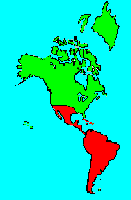SPECIES INFO
Lesser Nighthawk (Chordeiles acutipennis) breeds in the western United States and widely in South America as far south as Chile. Its size of eight to nine inches helps identify this species. The outer half of several tail feathers are white.
There are 7 subspecies. The nominate subspecies, Chordeiles acutipennis acutipennis, is found in northern and central mainland South America. The subspecies texensis is found in the southwestern United States and south into north and central Mexico. This subspecies migrates much further south. The subspecies littoralis is found from southern Mexico to Costa Rica. The subspecies micromeris is found from the northern Yucatan and migrating further south.
The subspecies crissalis is found in south western Colombia. The subspecies aequatorialis is found in western Colombia and western Ecuador. The subspecies exilis is found in western Peru.The subfamily nighthawk (Chordeilinae) contains about 10 species spread among four different genera: Lurocalis(2), Chordeiles(6), Nyctiprogne(1), and Podager(1). Nighthawks generally have long wings that extend to the tail when perched. Their tails are also forked.
Nightjars (Family Caprimulgidae) is a worldwide family of about
67 different species. Included in this family are the familiar nighthawks and Whip-Poor-Will.
Nightjars and Goatsuckers (Order Caprimulgiformes) are an order of about 120 species of birds that are found worldwide. Included in this order are the families of Oilbirds, Frogmouths, Potoos, Owlet-Nightjars, and Nightjars. Clements counts 28 species in three smaller families and 91 species in the nightjar family.
Aves contains about 8,650 different species of living birds known to science. Each year about one new species is discovered in some remote rain forest or remote island. In addition, scientists have been raising many subspecies to full species status which may raise the species count to 10,000. Birdlife recognizes 10,027 species as of 2011.
However, each year about one species goes extinct. The rate of extinction is increasing, and the rate of new discovery is decreasing, so that the number of bird species will soon begin to decline rapidly. Although different taxonomists would organize the birds differently, there are approximately twenty-seven orders of birds. These orders are broken down into about one hundred and fifty-five different families.
Recent research of the genetic structure of some of the shore birds and owls would indicate that the present organization of orders and families should have some modification.
The birds are a worldwide group of animals that are characterized by having the front limbs modified into wings that are used for flying. Perhaps the most unique feature of the birds is the feathers. These feathers are made up of a central support called a quill and a series of small filaments that are hooked together as barbs.
For many years it was believed that Archaeopteryx discovered in Bavaria was the oldest bird from about 150 million years ago. However, in l986, Sankar Chattterjee, a Texas paleontologist, reportedly discovered a bird in the genus Protoavis that lived about 225 million years ago.
When this project was begun in 1978, we used Austin & Singer for bird taxonomy. Since then, we have adopted many changes, but have kept some older concepts that are still found widely in the literature. Recently, we have used Clements and Howard & Moore. Very recently, we have used Monroe and Sibley for the higher taxonomy of the perching birds.
Backboned Animals (Phylum Chordata) are the most advanced group of animals on earth. These animals are characterized by having a spinal cord or backbone. Most members have a clearly defined brain that controls the organism through a spinal cord. Fish, amphibians, reptiles, birds, and mammals are in this phylum.
Currently, some taxonomists believe that the fish should be divided into two groups (sharks and regular fishes) and that there are some other primitive groups in the phylum such as hagfish or lampreys.
Animal Kingdom contains numerous organisms that feed on other animals or plants. Included in the animal kingdom are the lower marine invertebrates such as sponges and corals, the jointed legged animals such as insects and spiders, and the backboned animals such as fish, amphibians, reptiles, birds, and mammals.


